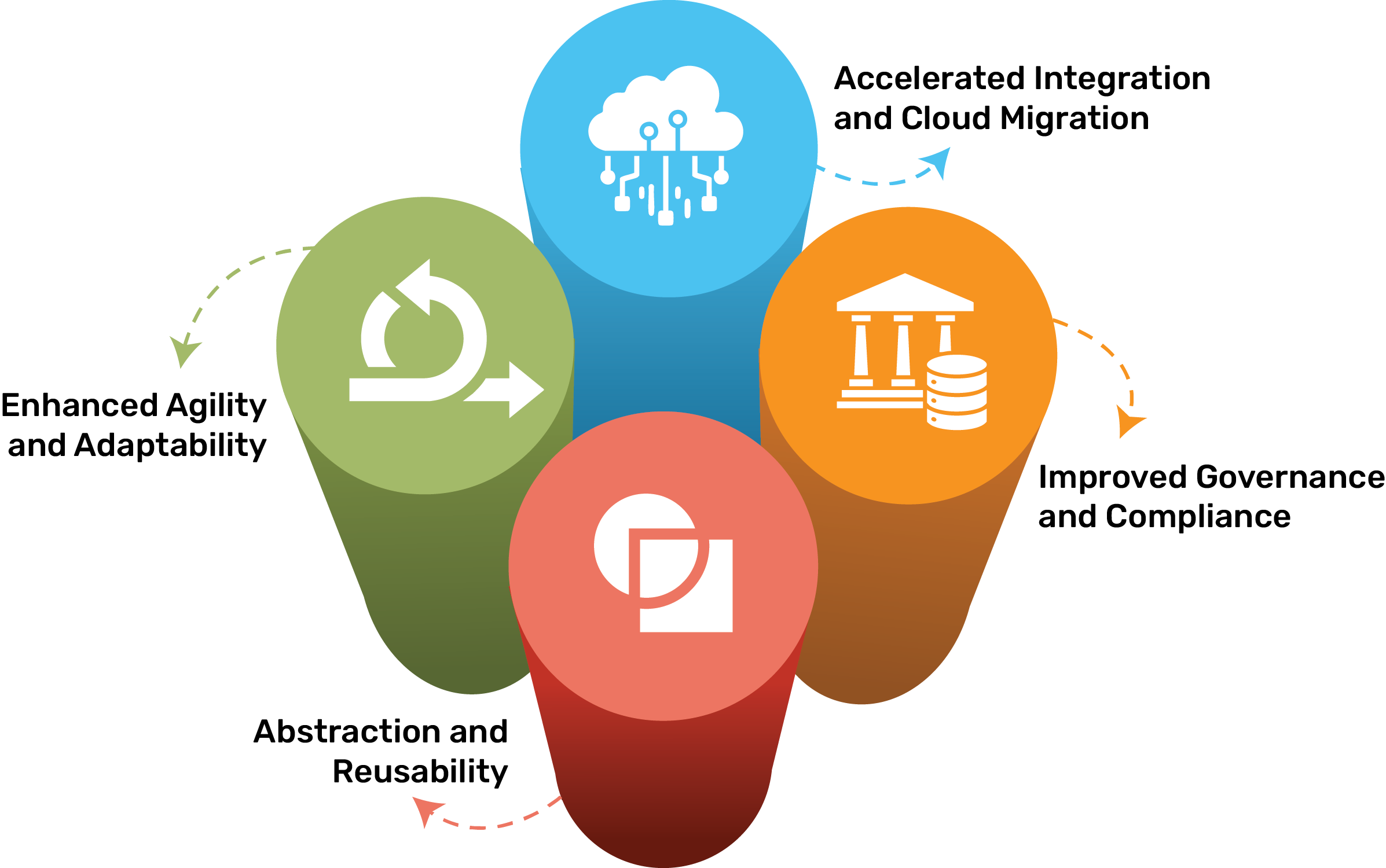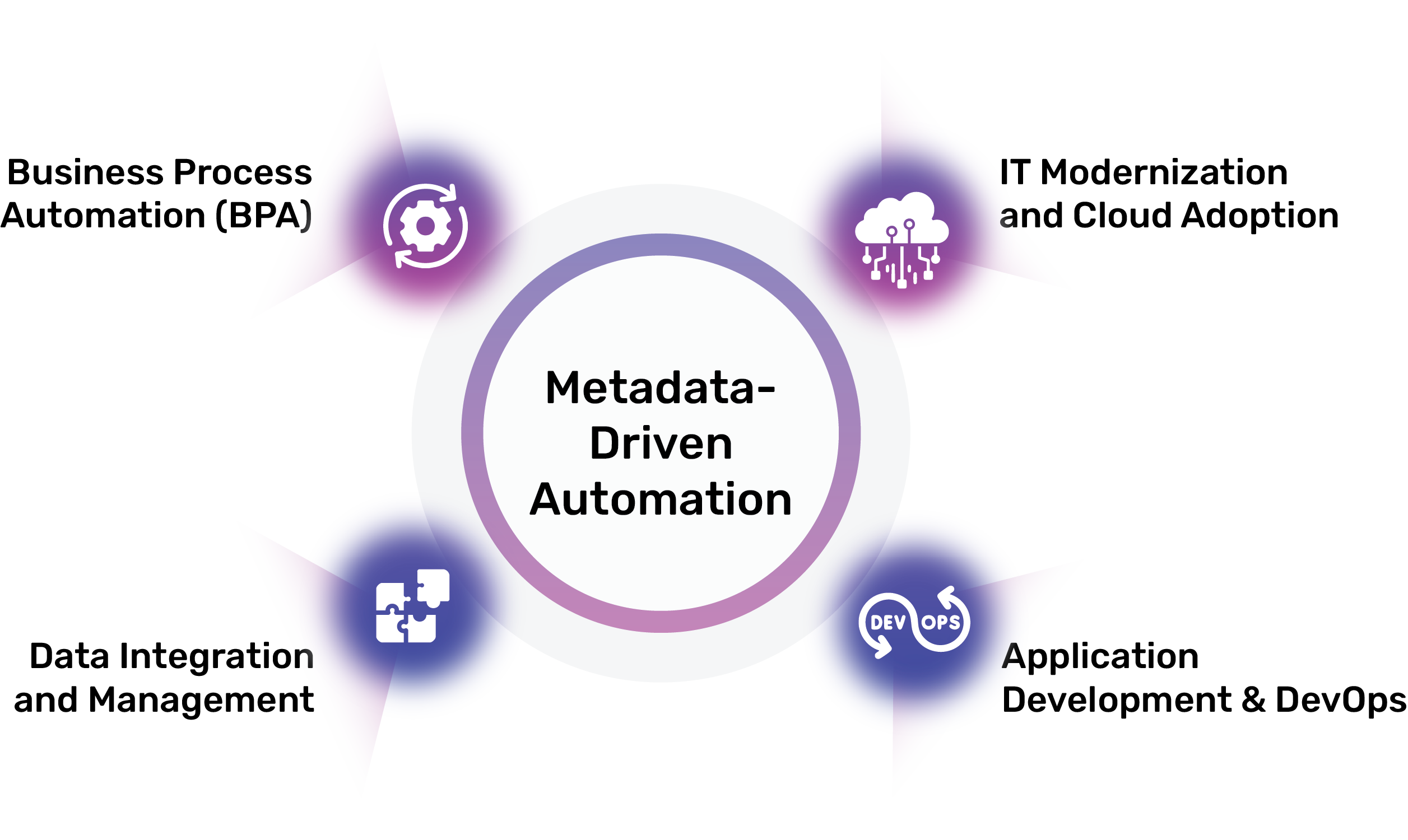
The drumbeat of digital transformation echoes through every boardroom, a constant reminder of the imperative to innovate, optimize, and differentiate. Yet, for many organizations, this journey is fraught with complexity, delays, and a struggle to realize true value at an accelerated pace. Imagine if you could cut the time to market for new digital services by 70%, streamline intricate processes, and liberate your teams from mundane, repetitive tasks. This isn't a distant dream; it's the tangible promise of metadata-driven automation.
In today's hyper-competitive landscape, merely undergoing digital transformation is not enough. The differentiator lies in the speed and efficiency with which these transformations occur, and how effectively they can be scaled across the entire enterprise. This blog post will delve into how metadata-driven automation is emerging as the pivotal force in achieving precisely that – a significantly faster and more sustainable path to a truly digital future.
Organizations embark on digital transformation to achieve a myriad of goals: enhanced customer experience, operational efficiency, new revenue streams, and improved decision-making. However, the path is often riddled with challenges:
These challenges collectively contribute to the protracted timelines and budget overruns that often plague digital transformation efforts. The traditional approach, often characterized by bespoke coding and manual configuration, is simply not equipped for the demands of digital transformation at scale.
At its core, metadata-driven automation leverages metadata–data about data – to define, configure, and orchestrate automated processes. Instead of hard-coding every integration, every data flow, or every business rule, you define these elements once as metadata. This metadata then acts as a blueprint, guiding automated systems in their execution.
Think of it like this: If your data is the content of a book, metadata is the table of contents, index, and genre labels. It tells you what the data is, where it is, and how it relates to other data. By automating based on these rich descriptions, you unlock a new level of agility and reusability. This is not just about simple automation; it's about intelligent, self-aware automation.

One of the most significant benefits of metadata-driven automation is the ability to abstract away underlying technical complexities. Developers and business users can work with higher-level definitions, freeing them from the intricacies of specific APIs, databases, or cloud platforms. This promotes reusability, allowing pre-defined metadata configurations to be applied across various projects and systems. This significantly accelerates digital transformation by reducing repetitive work.
In a rapidly evolving digital landscape, agility is paramount. Automation with metadata allows organizations to quickly adapt to new requirements or changes in underlying systems. When a data source changes, for instance, you simply update the relevant metadata definition, and all dependent automated processes automatically adjust. This contrasts sharply with hard-coded solutions that require extensive recoding and testing. This flexibility is crucial for any effective enterprise automation strategy.
Metadata provides a centralized, consistent source of truth for your data and processes. This inherent transparency significantly improves governance, ensuring data quality, lineage, and compliance with regulatory requirements. Process optimization using metadata means that audit trails are automatically generated, making it easier to track changes and demonstrate adherence to policies.
Integrating disparate systems is a cornerstone of digital transformation. Intelligent metadata integration streamlines this process by providing a unified way to describe and connect data across diverse platforms. Similarly, in metadata in cloud migration, metadata can be used to define and automate the movement and transformation of data as applications shift to cloud environments, significantly reducing manual effort and potential errors.
How does metadata-driven automation translate into such dramatic improvements in speed? Consider the following:
Metadata-driven automation is not a niche solution; it's a foundational approach with broad applicability across various facets of digital transformation:

At the heart of any successful data-driven transformation lies robust data integration. Metadata automation tools are instrumental in automating data ingestion, transformation, and loading processes. They ensure data quality, consistency, and accessibility, enabling better analytics and informed decision-making. This is crucial for building a unified view of your customers and operations.
Traditional business process automation often involves complex coding to define workflows. With metadata-enabled business process transformation, workflows are defined using metadata, allowing for easier modification and adaptation. This translates to faster implementation of automated processes across departments, from customer onboarding to supply chain management. This is a critical component of any effective business automation strategy.
As organizations modernize their IT infrastructure, metadata automation for IT modernization plays a crucial role. It helps automate the discovery, mapping, and migration of applications and data to new platforms, including cloud environments. Metadata in cloud migration ensures that dependencies are understood and handled correctly, minimizing downtime and risk.
Metadata-driven workflows for faster transformation extend into the realm of application development and DevOps. Metadata can define application configurations, deployment pipelines, and testing scenarios, leading to more efficient and reliable software delivery. This fosters a culture of continuous delivery and innovation.
Implementing metadata-driven automation requires a strategic approach. It's not just about acquiring tools for metadata-based enterprise automation; it’s about rethinking how you design and execute your digital transformation automation.
Cultivate a Culture of Automation: Promote understanding and adoption of automation principles throughout the organization. This isn't just a technical shift; it's a cultural one.
The promise of a 70% faster digital transformation isn't an exaggeration; it's a realistic outcome when organizations strategically embrace metadata-driven automation. By moving beyond traditional, manual approaches, businesses can unlock unparalleled agility, efficiency, and scalability. This intelligent approach to automation in digital initiatives empowers organizations to navigate the complexities of the digital age with confidence, transforming their operations and delivering exceptional value to their customers.
The journey towards true enterprise automation is a marathon, not a sprint. However, with intelligent metadata integration and a well-defined strategy, organizations can significantly shorten the race, achieving their digital ambitions at a pace previously unimaginable. The future is here, and it's being built on the power of metadata-driven automation. Don't just undergo digital transformation; accelerate it.
Metadata-driven automation uses "data about data" (metadata) to define and orchestrate automated processes. Instead of hard-coding every step, you configure rules and relationships using metadata. This blueprint then guides automated systems, making processes more flexible, reusable, and easier to manage. It's about intelligent, configuration-based automation rather than extensive custom coding.
It accelerates transformations by reducing development time and effort. With metadata, processes are defined once and reused across different initiatives. This streamlines integration simplifies configuration and makes systems more adaptable to change. Faster deployment, reduced errors, and improved agility all contribute to significantly quicker digital project completion.
While highly beneficial for large enterprises managing complex digital landscapes, metadata-driven automation isn't exclusive to them. Any organization undergoing digital transformation can benefit from its principles. It provides a scalable approach that helps businesses of all sizes automate processes more efficiently, regardless of their current scale or industry.
"Metadata automation tools" can include a range of platforms from dedicated metadata management solutions to integrated intelligent automation platforms. These tools provide functionalities for defining, storing, governing, and applying metadata to automate workflows, data integration, and system configurations. They often offer visual interfaces for easy setup and management.
The main advantage is its inherent flexibility and scalability. Traditional automation often involves rigid, hard-coded scripts that are difficult to modify. Metadata-driven automation, however, allows changes by simply updating metadata definitions, without extensive recoding. This makes it far more adaptable to evolving business needs and easier to scale across diverse enterprise systems.
